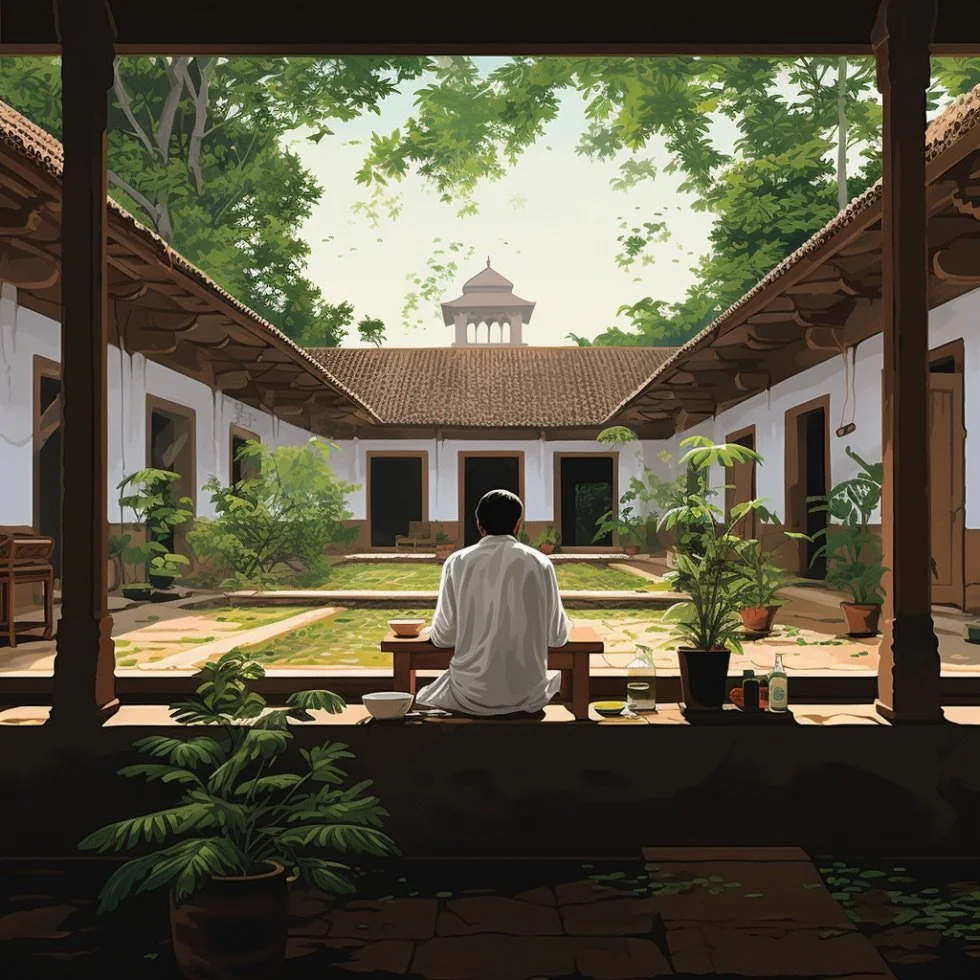How to Identity
As I sat there in silence, quietly eating my meal and staring at all of these old people, I began to wonder about identity. Who were all of these people and what were their stories?
This was ten days into my seventeen day detox at an Ayurveda prison hospital in the South of India last month. I had been curious to explore the ancient Indian medicine practice and found the perfect place to surrender to doctors and a strict detox protocol practiced for thousands of years.
The detox was more than for my body though. I turned off my phone and unplugged from my world fully for seventeen days. The time, environment and people led me to introspect on ideas and topics I hadn’t before— including how we identity.
We hold on to our identity so tightly– like a security blanket. Any threat to our identity is a threat to us, often triggering a response.
We identify by how we dress, I know I certainly do. Here, at the prison hospital, that was not an option. We were all given white pyjamas to wear, everyday. It was my first time in life actually wearing a uniform consistently. I liked it.
We identify based on our home and all of our stuff inside. So much time, energy and resources are invested in creating and cultivating a home that feels like it fits who we are, how we are and how we want to live. At the prison hospital, it was not an option to identify based on my home or my stuff.
We identify with what we do. I had for many years. Here, I am not working– so I have temporarily let go of that part of my identity. Others though continue to work– emails, calls, etc. Why I wondered? If they can afford to come to a place like this and take a few weeks away, that means they are established enough professionally that they are probably not dependent on their income to survive. But maybe they are dependent on work, an important part of our identity.
We identify based on where we are from. In meeting the others, the first question posed was “where are you from?”. “Complicated” is how I start my response. “Originally from Canada. Spent most of my adulthood in New York. I have been living in Lisbon, Portugal the past few years. Oh, and my family is originally from Delhi”. That last part I realized was necessary for all of the Europeans who were trying to make sense of meeting an Indian man in India, but who spoke without an Indian accent.
We identify with our family and loved ones. In speaking with some of the older women, they loved to gush about their kids and grandkids, telling me their names, where they live, and their stories with so much pride. While I also identify with my family, being fully offline and disconnected had meant not sharing this experience with them, despite I know they are very curious, especially my younger sister, who was disappointed when I told her that my disconnection would not involve sending her updates, which she was secretly hoping I would have made an exception for her.
In deconstructing the dimensions of identity, I started to recognize that my way of being there was a way of momentarily deidentifying with everything, everywhere and everyone that I normally do.
What’s left of me when I remove everything? Who am I, without my clothes, my home, my work, my location and my family?
It’s an interesting and important reflection, one that allows me to connect more deeply with my essence and energy.
As I finished my lunch, I got up with a smile on my face and felt a strong feeling of satisfaction, feeling more connected with myself after having removed many of the layers that often cover who I am.
I also had the thought that maybe next time for fun, I’ll also change my name to really see how I feel without even that.




